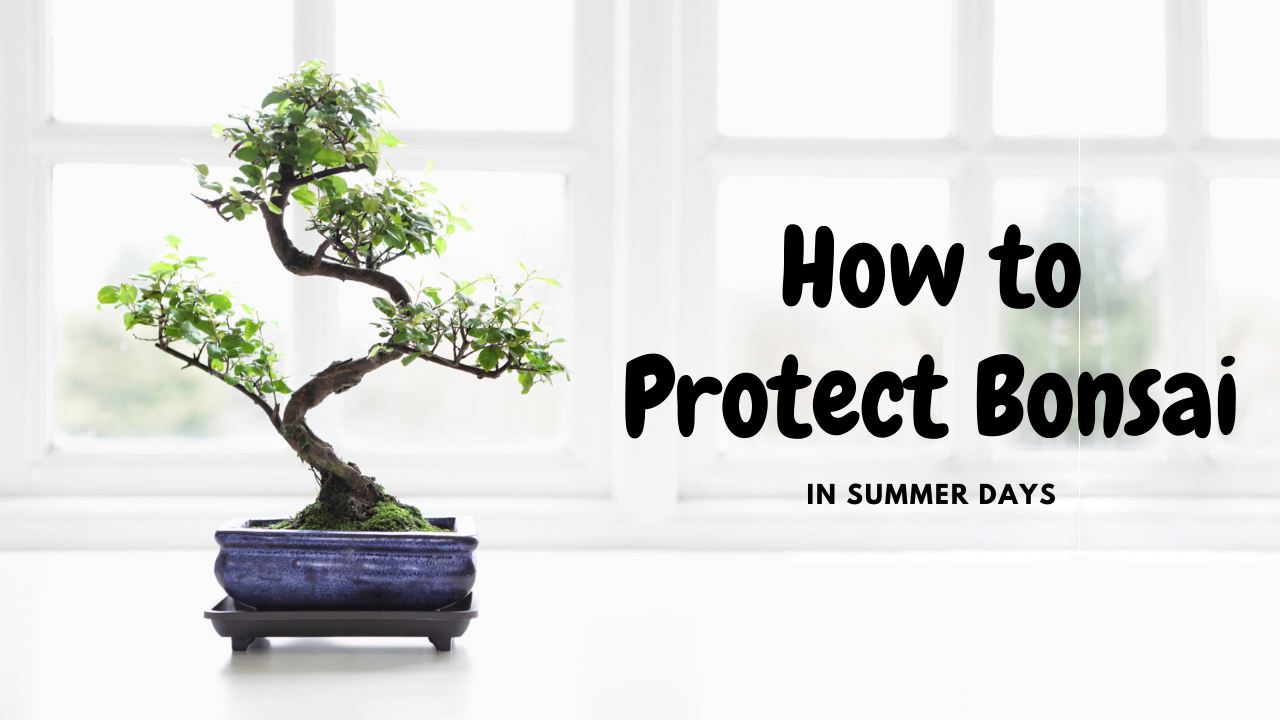As the summer heat is approaching, you must be looking for bonsai tips for the summer.
Key Takeaways
- Water your bonsai plant deeply and thoroughly in the morning, and keep the soil moist but not soggy.
- Provide adequate shade for your bonsai tree during the hottest part of the day to prevent overheating and sunburn.
- Monitor your bonsai’s soil moisture levels and adjust your watering schedule accordingly to avoid overwatering or underwatering.
- Regularly prune and trim your bonsai tree to encourage healthy growth and maintain its shape, but avoid doing so during periods of extreme heat or drought.
While it is easy to say that the bonsai plants need more watering, there are more factors to keep in mind.
The goal is to keep your bonsai plant healthy during summer without causing too much stress with interference. To achieve this goal, in this article, I am going to share with you 16 tips that you should read carefully. As many newbies make these mistakes, you will save your bonsai from the scorching sun if you take note of the following pointers.
Bonsai plants summer care tips
1. Full sun
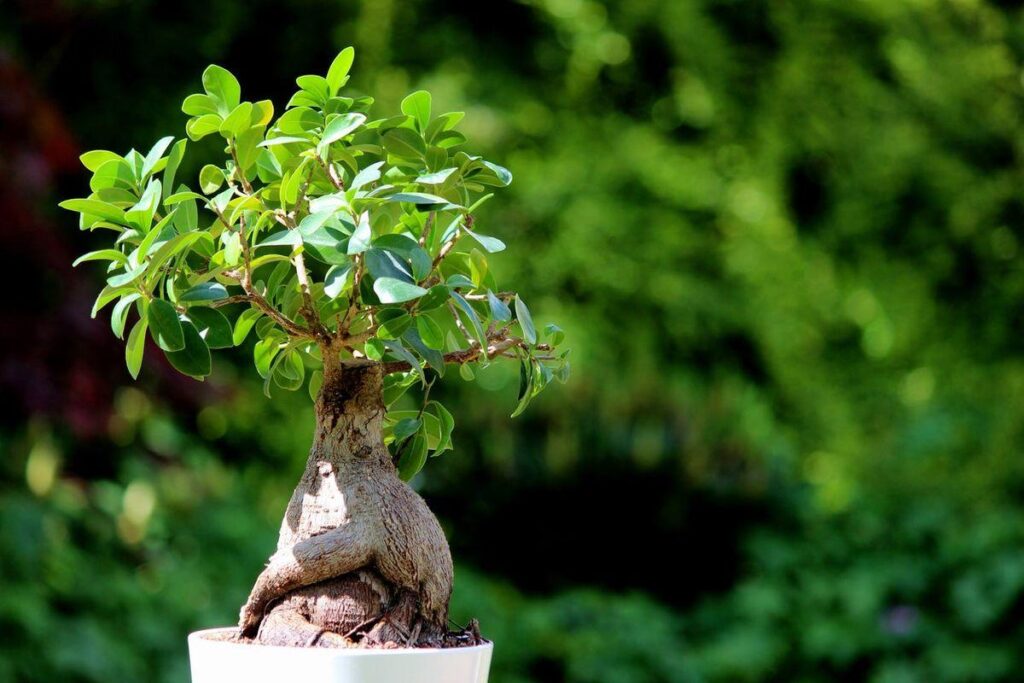
Many bonsai plants enjoy full sun in the summer, but that doesn’t mean they want sunlight all day. The afternoon sun can heat the bonsai pot and soil and might even burn the leaves. So, ensure your bonsai receives morning and evening sun, with partial shade in the afternoon.
Buying a flowering bonsai tree can be an excellent way to add natural beauty and tranquility to your indoor or outdoor space. Online retailers and local nurseries offer a variety of species, sizes, and styles to choose from. It’s important to research the specific care requirements of your chosen tree and ensure you have the appropriate environment and resources to care for it properly. With a little research and attention, a flowering bonsai tree can bring joy and beauty for years to come.
2. Watering
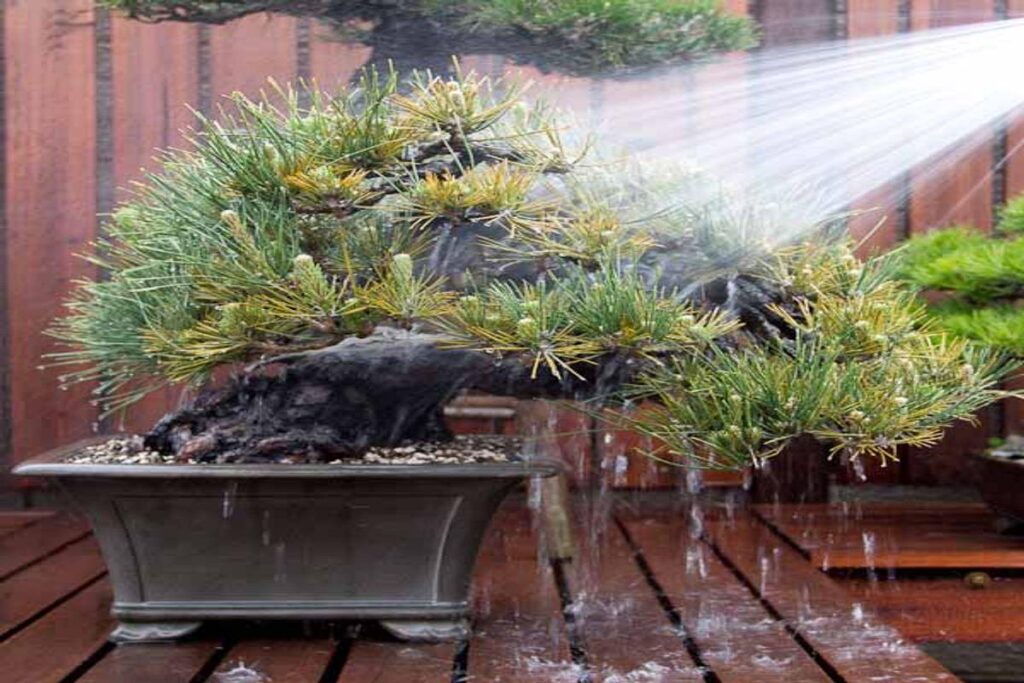
An ancient Japanese saying says soil, pot, and bonsai should be watered three times each. Once those are taken care of, the remaining water is for the bonsai roots. A pot may cling to water, but the soil also needs nourishment.
If you are using water from the tap or a hose, ensure it is not hot because it can burn the roots while damaging the soil. Therefore, cool it down before watering your plant.
In the summer, over-watering the outdoor tree becomes impossible. Your plant will need the smallest amount of water you can give it, and you will probably have to water it three times a day: In the morning, after work, and before bed.
You can use a good soil moisture meter to check how quickly water evaporates from the soil during the summer; certainly, the results will surprise you!
Bonsai plants that love sunlight will soak in as much as possible, so they will frequently need watering. If you feel your plant’s soil is dry, provide watering. Slowly you will learn how often your bonsai needs water by testing daily.
3. Check your soil level
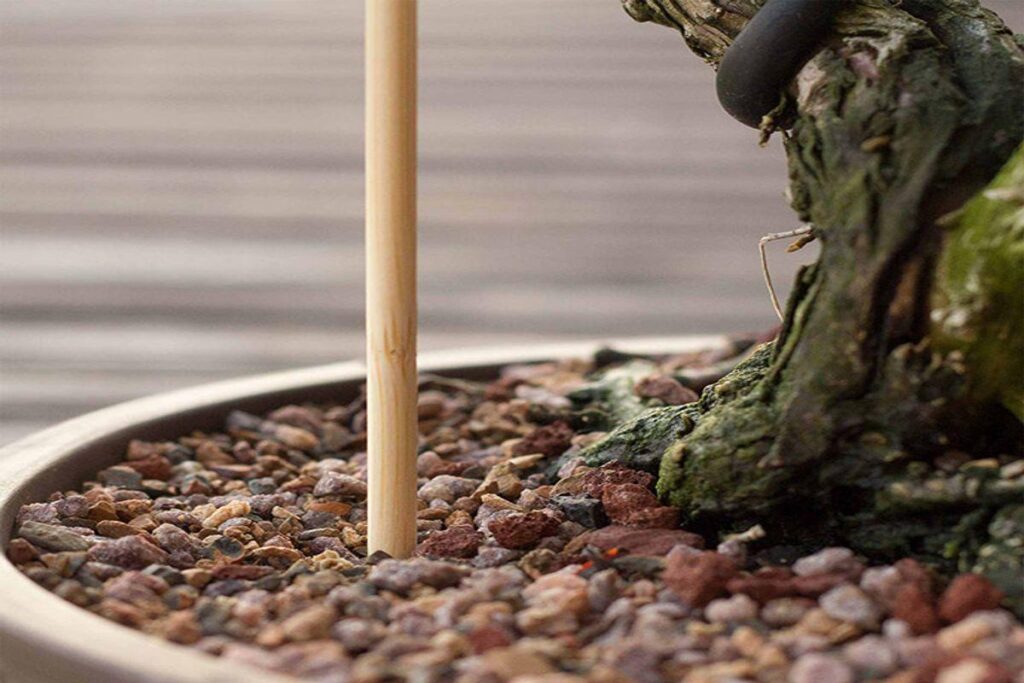
Water causes soil to compress, push through the drainage holes, or fall over the sides. Make sure you keep your soil topped up so the roots remain covered.
4. Feeding
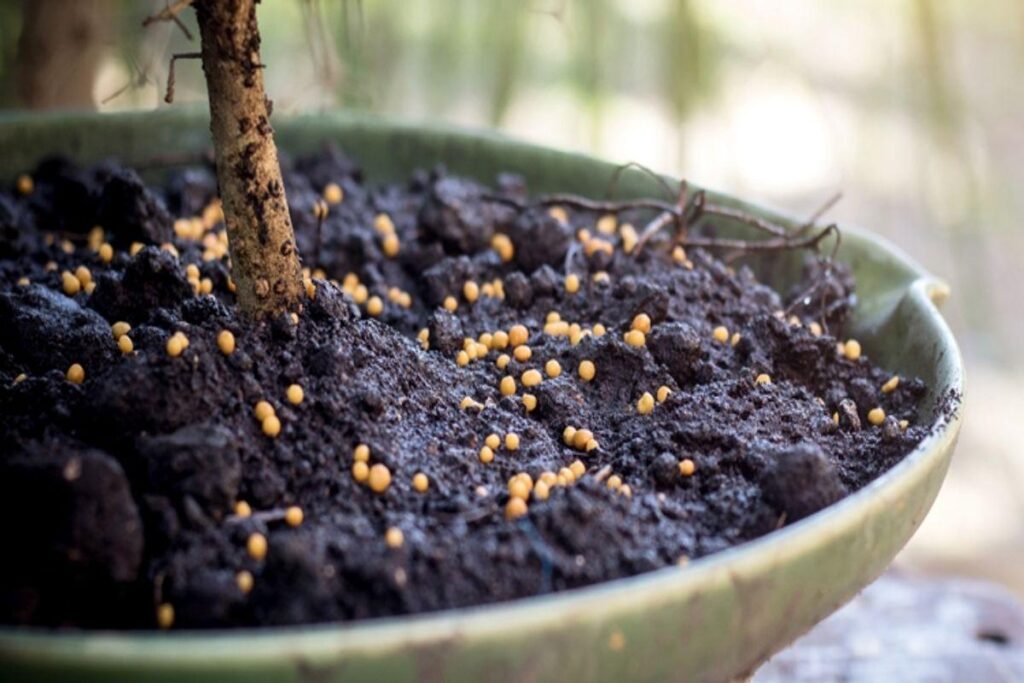
At this time, your bonsai tree is eating as much as possible. Therefore, ensure you fertilize your bonsai plant regularly to keep it happy. While pouring water into the soil drains the nutrients away.
Moreover, avoid nitrogen-heavy synthetic fertilizers; they are complex and bad for your soil. They can be downright deadly in the summer. This fertilizer requires trees to use a lot of resources to process, and in summer, the bonsai plant needs those resources to stay alive. (Imagine how a heavy protein-rich lunch on hot days can make you feel sick).
Therefore, stick to organic fertilizers, such as compost-based products or fertilizers made for bonsai trees.
Also, many bonsai communities use Miracle-Gro weekly at one-fourth of the recommended strength. Other sprinkle osmocote on the soil surface to provide slow-release fertilizer with every watering.
Remember to pause the fertilizing if the weather is consistently at 90 degrees Fahrenheit to ensure that the roots are not burned when the heat causes excessive evaporation.
5. Misting
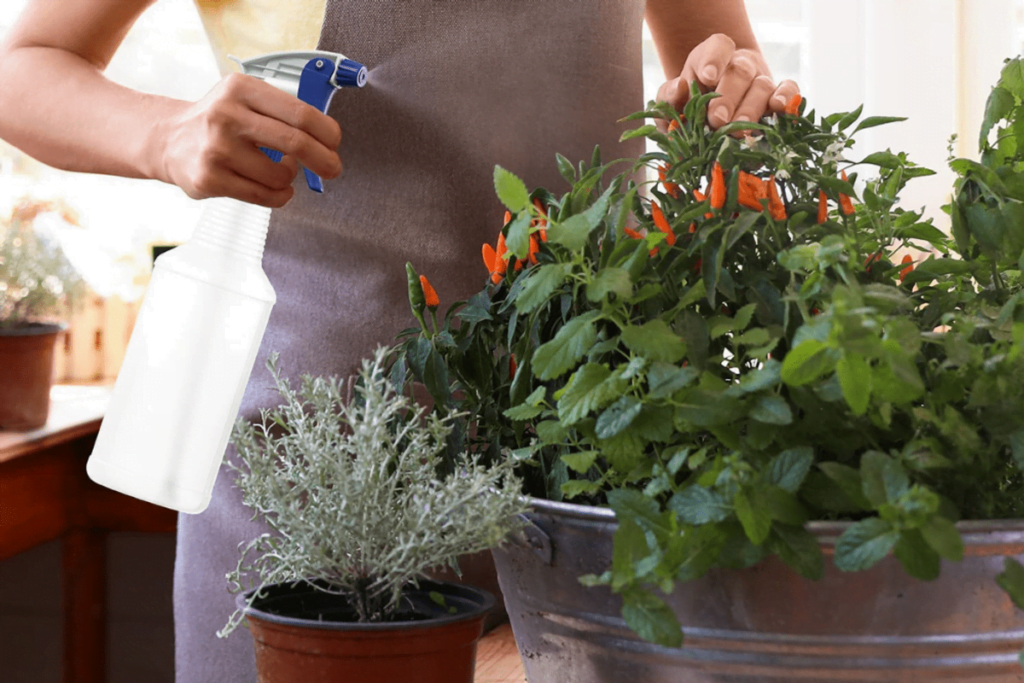
Of course, your bonsai loves humidity. However, too much misting may leave droplets on the leaves that act as a magnifying glass, eventually burning them.
Use a spray bottle with an excellent mist so that large droplets do not stick to the surface of the leaves.
6. No neglect
One day of non-watering is enough to lead to the death of root tips. So, never forget to water your bonsai plant in summer. Make it a daily habit to check the soil at least twice.
7. Location
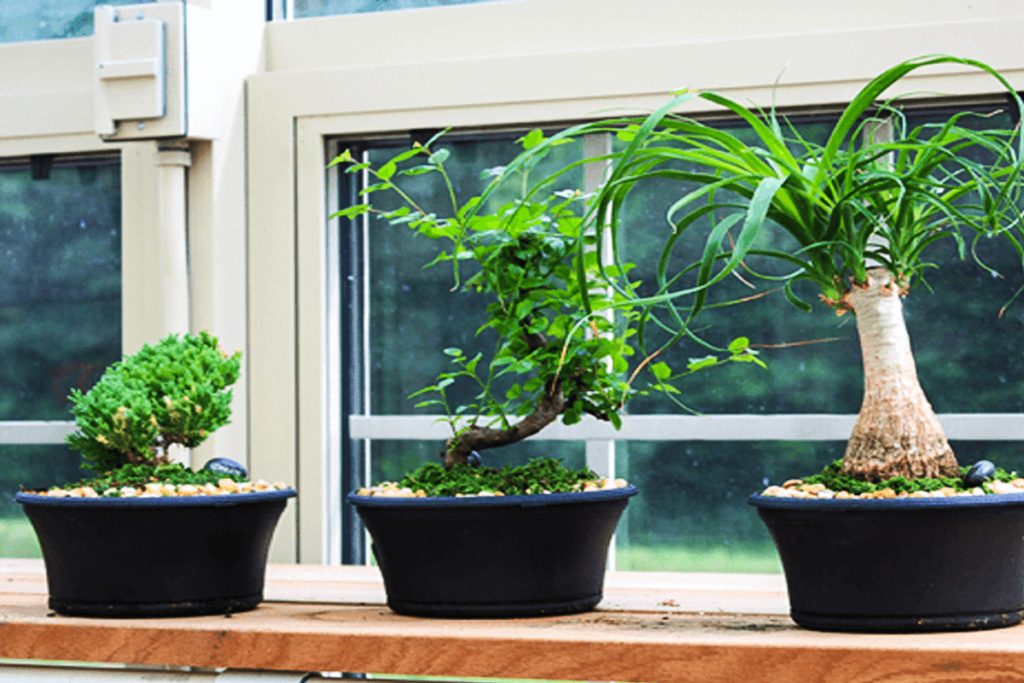
Even if your bonsai is an outdoor tree, moving it indoors or into a greenhouse is probably a good idea during high summer temperatures. If this is not possible, at least arrange some shaded place, even if that means giving your bonsai tree its beach umbrella for the summer.
Most trees need to be located in full sun, but the reality is that when they are worked as bonsai, you must be very careful where to place them. It is often recommended to put them in a semi-shaded area.
Because of this, two things are achieved:
- It allows the leaves to stay green and pretty.
- Maintain humidity for a longer time.
It is essential for those who live in a very hot climate, such as the Mediterranean, no matter the species. Avoid direct sunlight whenever possible.
8. Spread moss around the bed
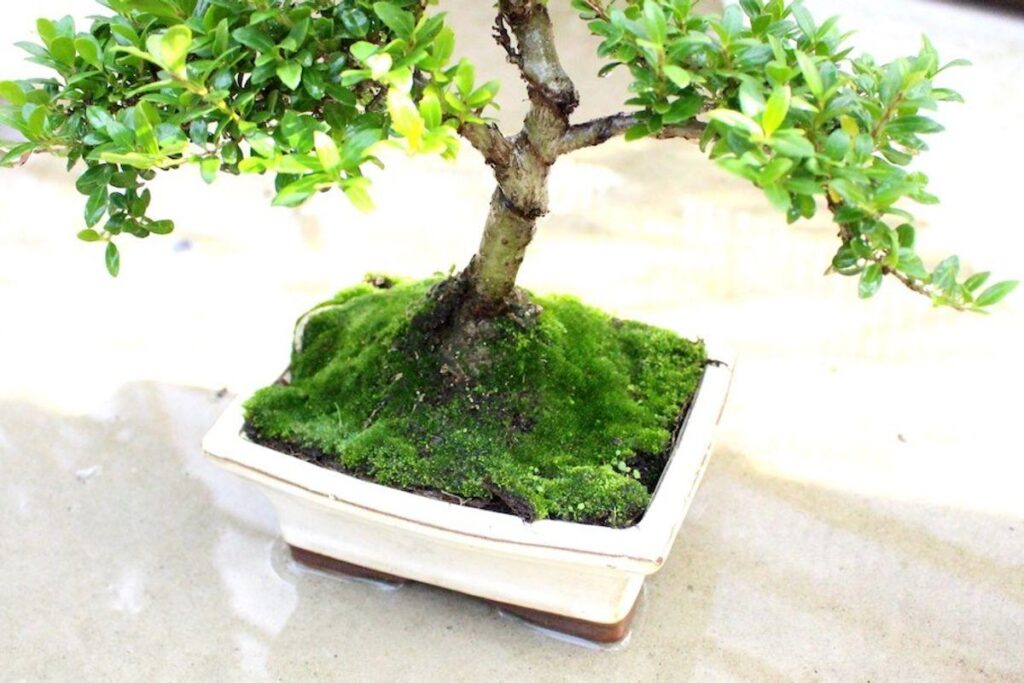
If you’re looking to be proactive -which is a great idea- now is a great time to plant moss around the base of your Bonsai plant.
A moss is terrific for Bonsai, providing cooling insulation for the roots and retaining moisture. A layer of moss on top of your potting will do a lot to protect your bonsai plant from the ravages of summer.
9. Watch the leaves carefully
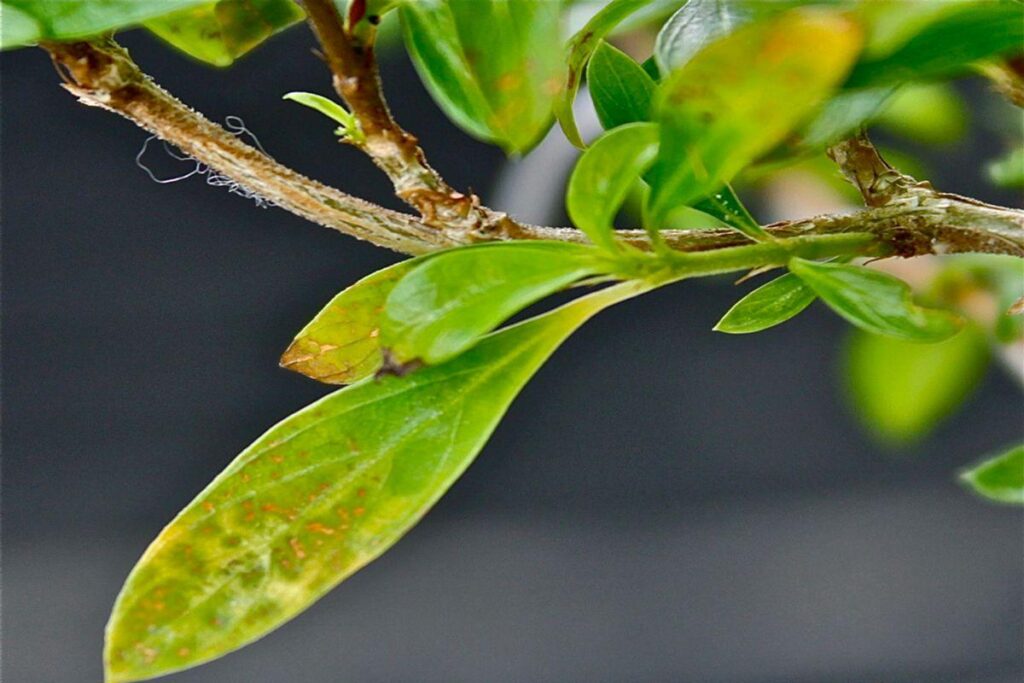
Carefully watch your bonsai leaves, as most bonsai show illness in their leaves first. If your bonsai leaves look yellow or worse, blackened-this is a major red flag that summer heat harms your bonsai tree.
At that time, do more watering, add more shade or do whatever it takes to bring the bonsai inside until it is healed. If the leaves are discoloured, your bonsai is already in some trouble.
10. Weeds
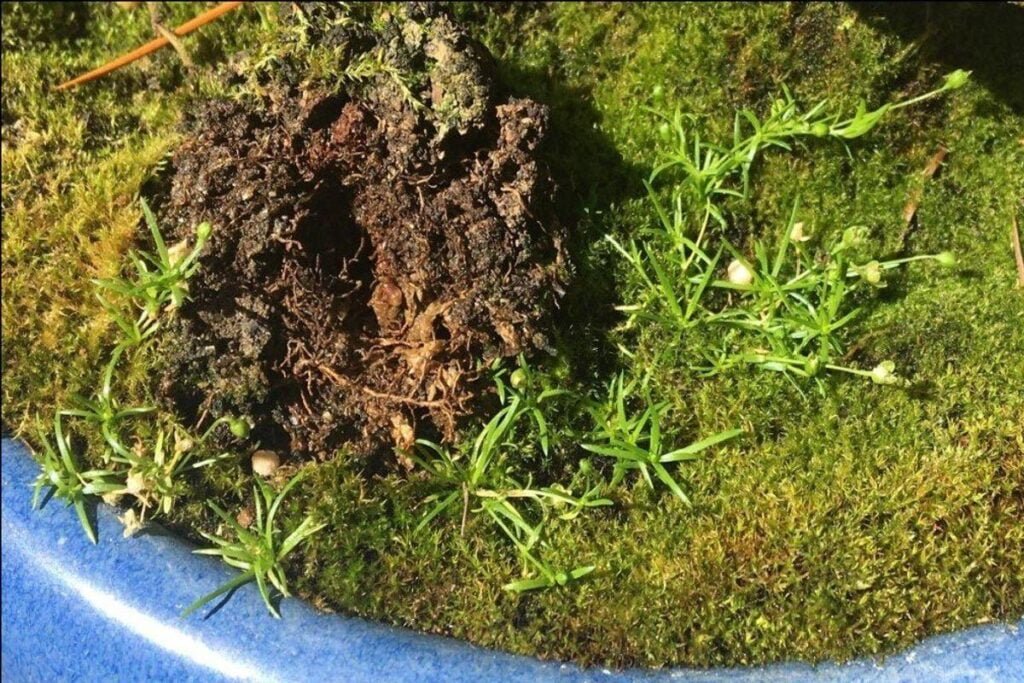
Weeding is the ongoing task for the outdoor bonsai trees. Even a single weed in the pot is potentially detrimental to your bonsai tree. So, remove weeds as they show up in the bonsai pot.
The weed will fill your bonsai pot and take water and nutrients from your tree. Eventually, they will impact the roots of the tree as well. Hence, it is easiest and best to take away weed as part of your daily summer care routine.
11. Pruning
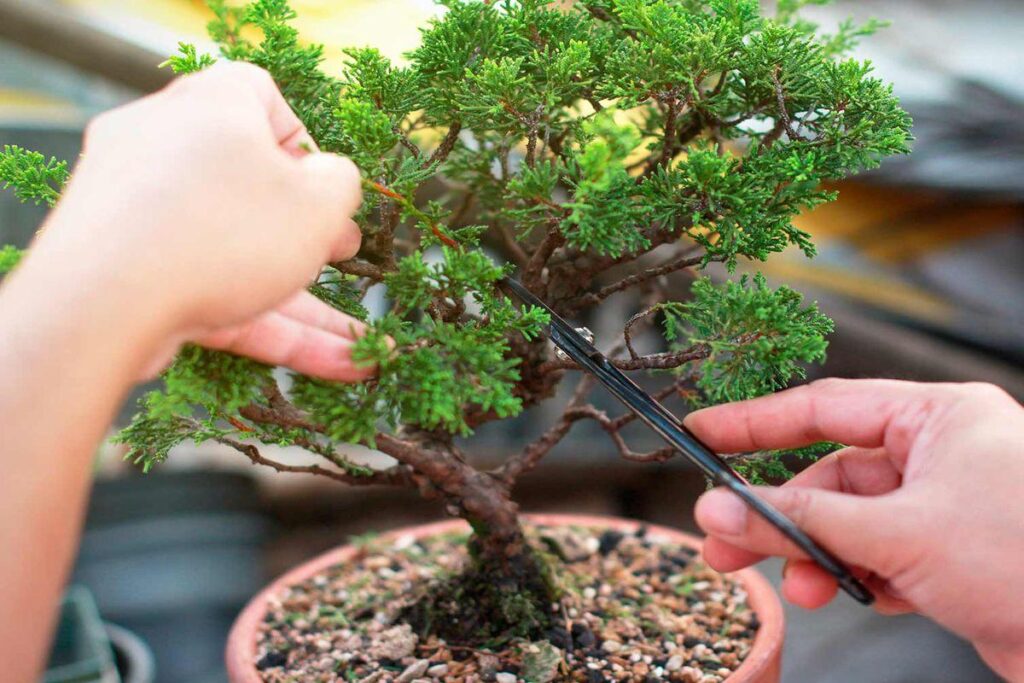
During summer, although pruning is not recommended, it can be clipped to maintain the bonsai style.
As the bonsai tree grows, the branches will lengthen, and new branches will sprout where you may not want them. So, the bonsai tree will need some light pruning to maintain the desired shape.
Minor adjustments can be done with scissors or pruning shears. While significant adjustments such as removing a branch require more aggressive pruning, you may need to invest in some essential bonsai tools.
12. Tools
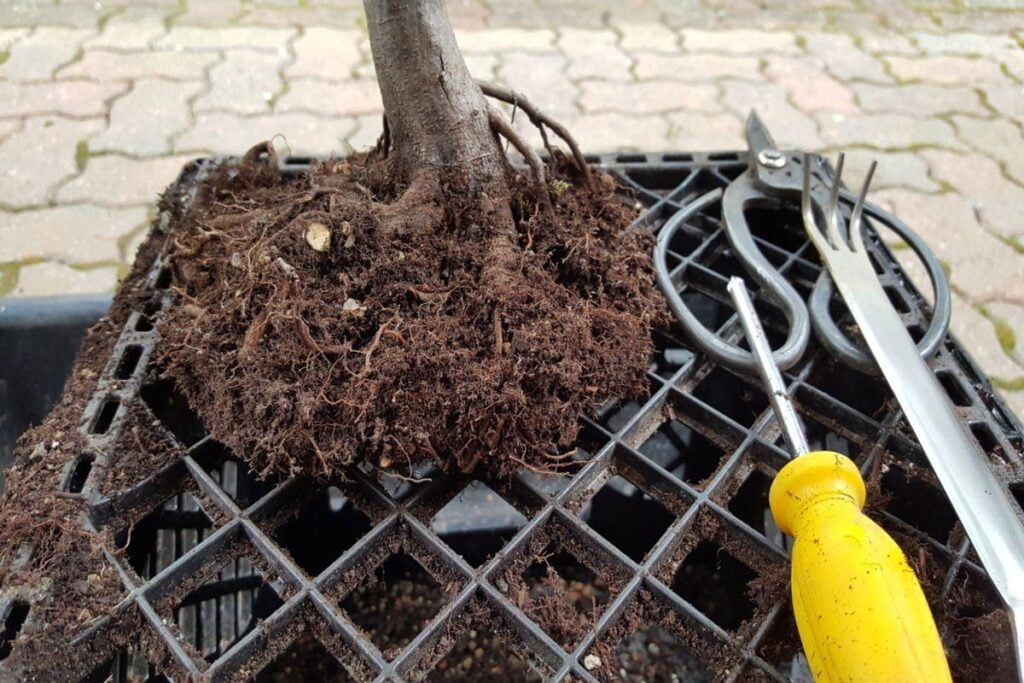
Bonsai tools are available in a wide range of quality levels and prices. You can get essential cutters (shears or scissors) from the hardware store. Moreover, tools specifically for bonsai work are readily available on the internet.
If you have access to a physical location that sells bonsai tools, ask the store personnel what they suggest for your tree.
Some of the recommended bonsai tools are:
- Concave cutters.
- Long-handled scissors.
- Wire pliers.
- In addition, a chopstick can be used to move soil during repotting and to bend branches to see if they need repositioning in the future.
13. Wire
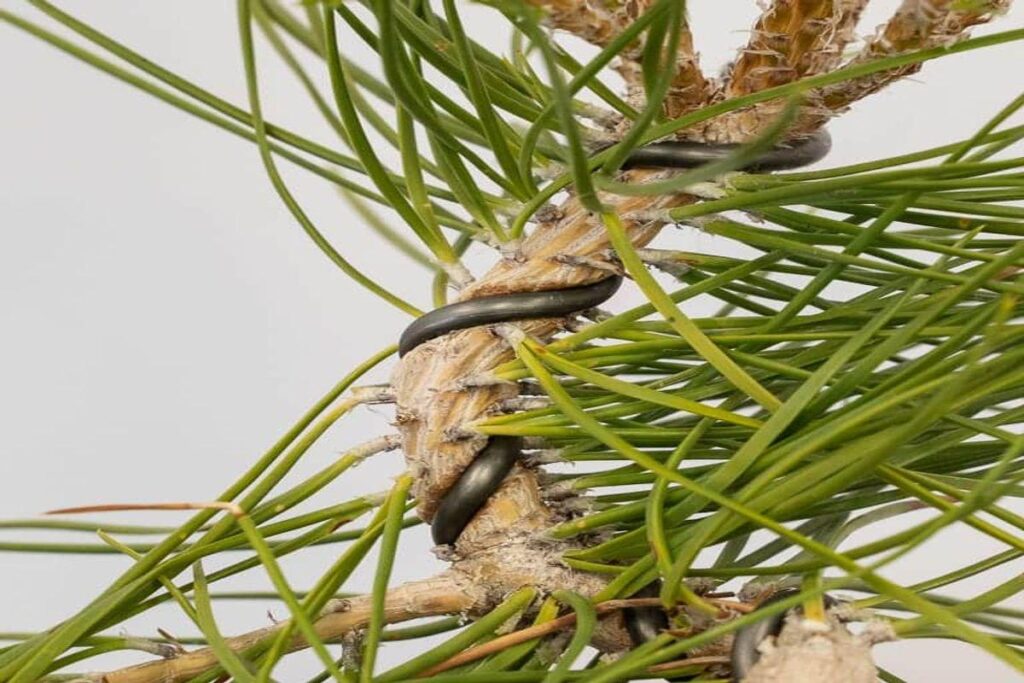
Additional shaping and styling can also be achieved by applying wire to the branches. Of course, wiring a bonsai tree takes some practice and it’s best to research shaping techniques or seek help from experienced bonsai growers.
Wire scars on black pine bonsai
Any bonsai tree actively growing can cause swelling that leads to wire scars. Limited scarring is okay sometimes, but deep scars are rarely acceptable.
You can use flags or coloured tape to indicate trees with wire. This can be an excellent reminder to check and see if swelling branches need attention.
14. Repotting
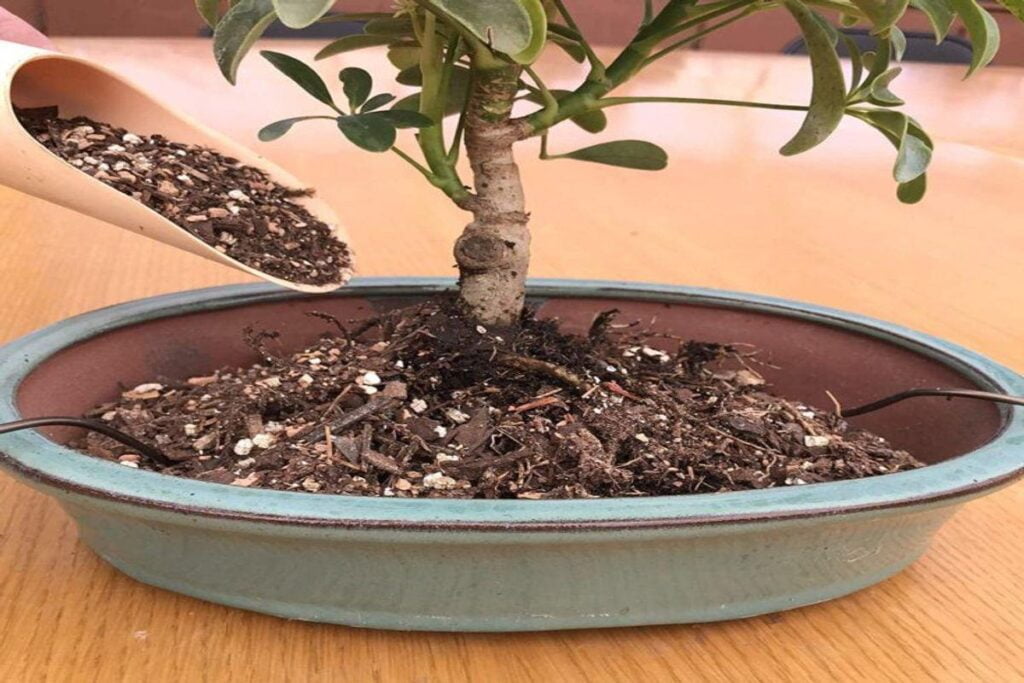
Now is the time to consider whether your bonsai tree needs repotting. If you have never re-potted a bonsai tree before, you should do a little research before you do so. Look online for instructional videos, consult an expert, a bonsai-club member, or seek a class to learn the best repotting technique.
When you reach the middle of summer, the bonsai plant will slow down growth and prepare for the coming cold months. It focuses on seed and flower development. Broadleaves develop roots quickly in spring, and you may need to re-pot them sooner than expected.
You should not re-pot conifers in summer since they prefer not to be disturbed after sprouting. Ideally, it would be best to do this at the end of winter or early in spring when you see fresh leaves.
With a consistent summer care routine, your bonsai trees should thrive during summer. Moreover, this is the perfect time of year to bring another bonsai tree into the family.
15. Pest control
Aphids, thrips, and mealybugs are the year-round trouble, but some pests are more active in summer. Always have a watch on your bonsai plant for spider mites as they like hot and dry conditions, moreover, they reproduce quickly.
To keep the number of spider mites down, wash out the mites with water.
Another problematic pest of this time of year is the caterpillar. If your bonsai leaves are stuck together then it is a sure sign of caterpillars. If you peel the bonsai leaves apart in time, you might find the culprit.
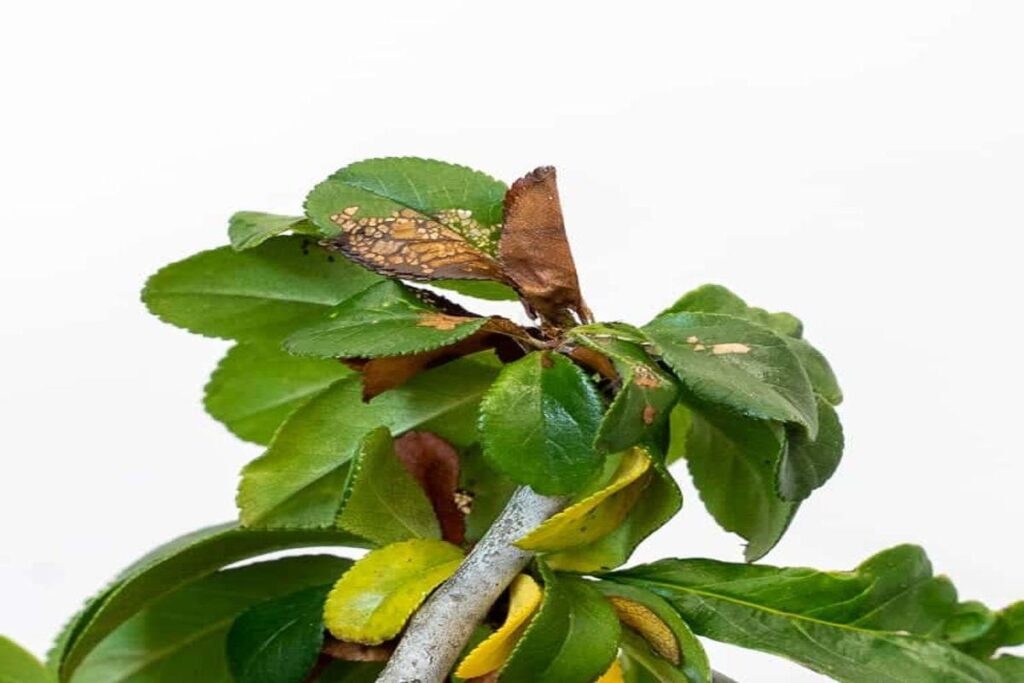
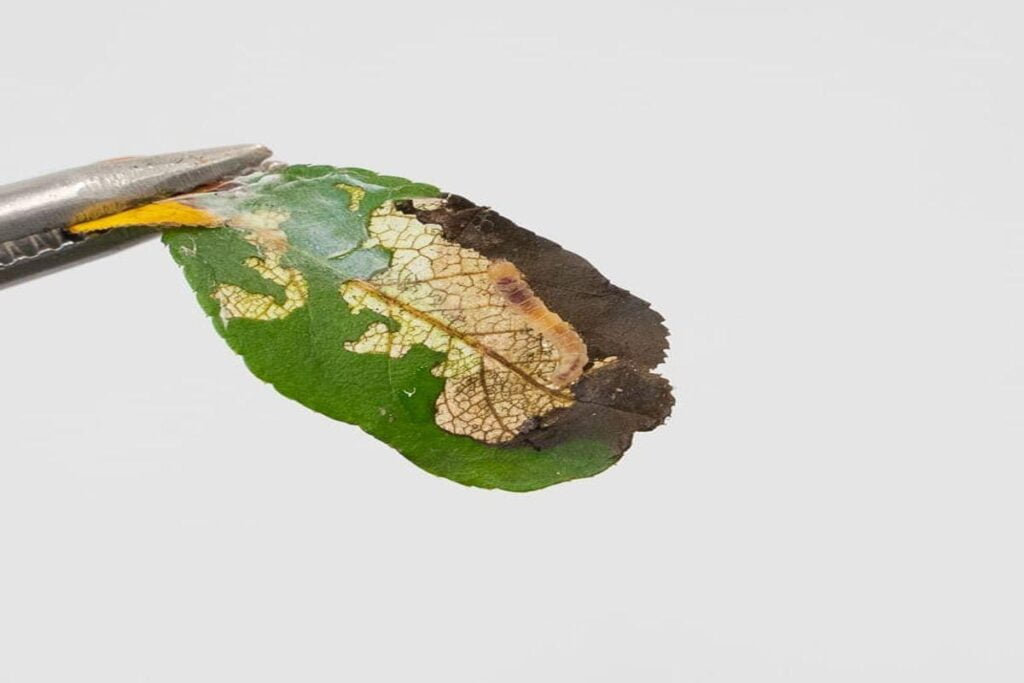
However, you need to keep the pest number down this time of year as bonsai plants do not respond well to insect damage when they are dormant. Late summer is the chance to apply systemic pesticides as plants do not absorb pesticides well when they are dormant.
Fungal pathogens
Late summer is a great time to get ahead of fungal pathogens. Some of the fungal pathogens attack the foliage, others make trouble for the roots.
Here is an example of damage caused by a foliar pathogen.
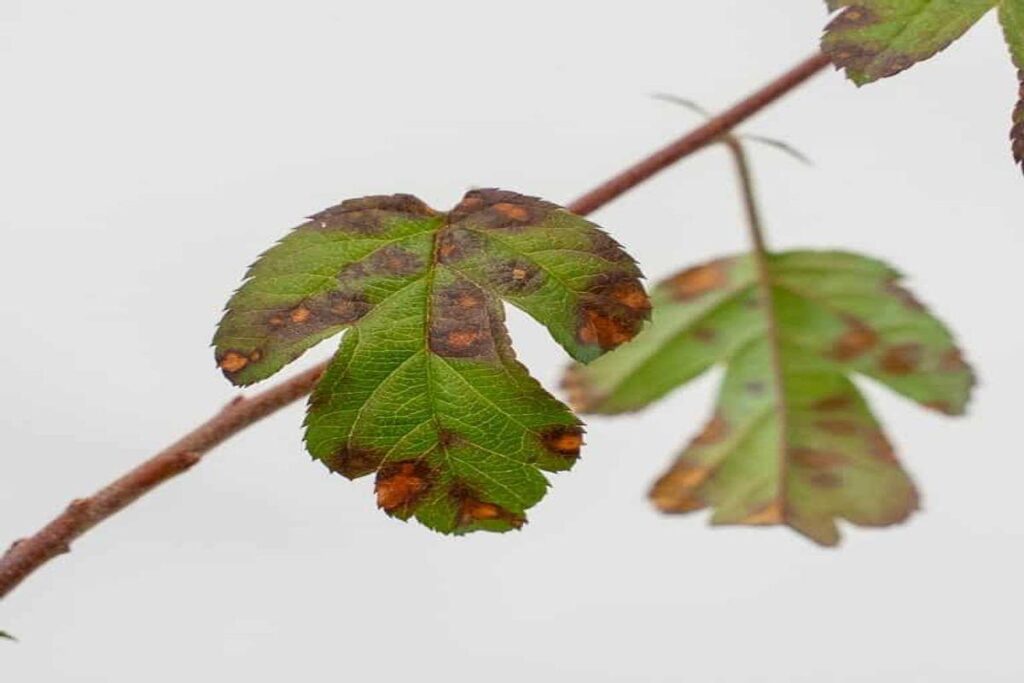
If you notice random leaf damage on the leaf surface, fungal pathogens are a likely culprit. If tips of leaves are damaged, the problem is usually in the soil.
According to a local plant pathologist, these are symptoms that likely result from “root unhappiness.”
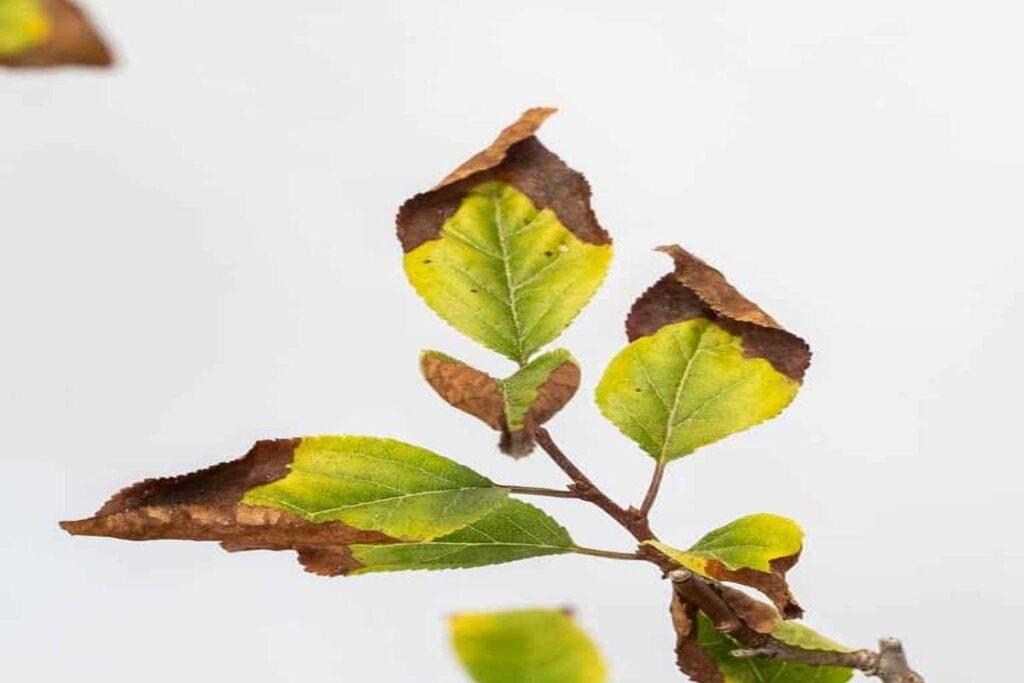
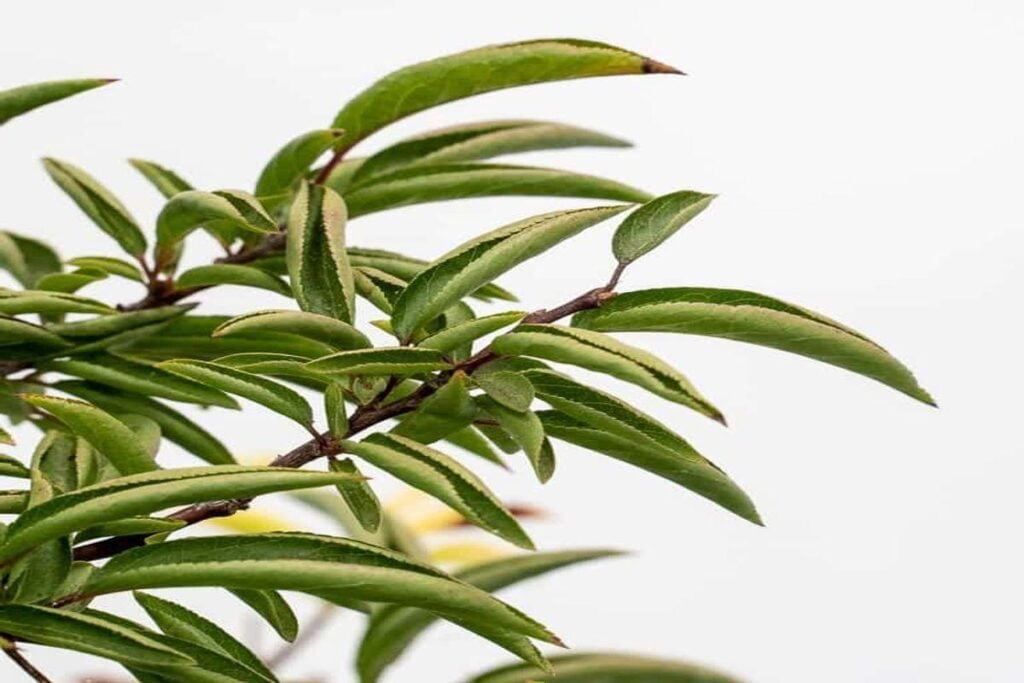
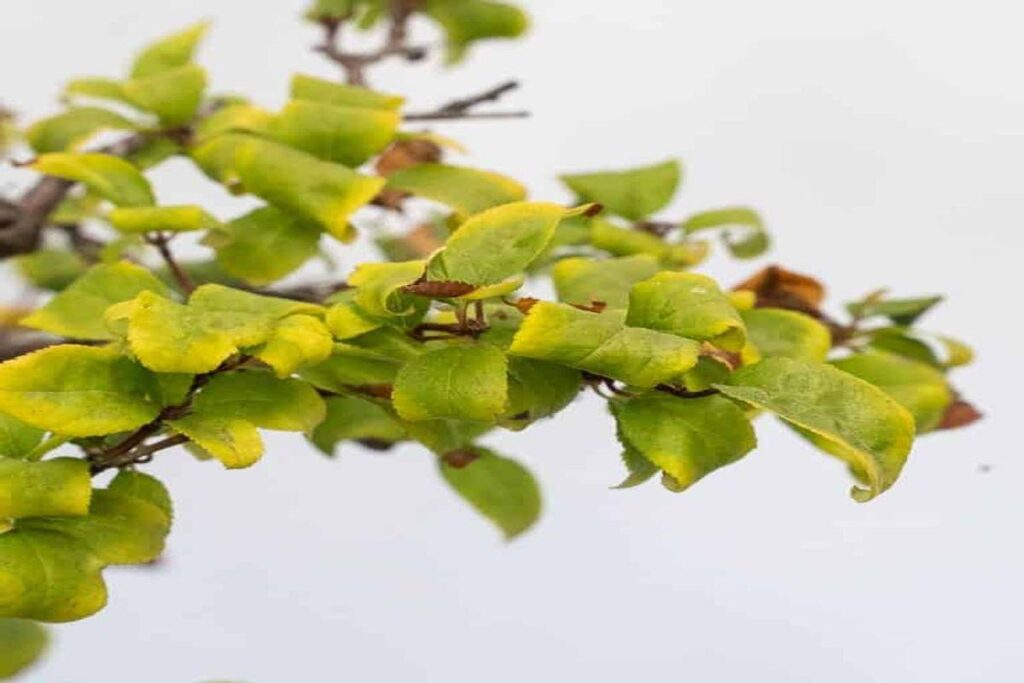
Moreover, Chlorosis is a related problem as iron deficiency can result from a variety of root problems from pathogens or poor drainage.
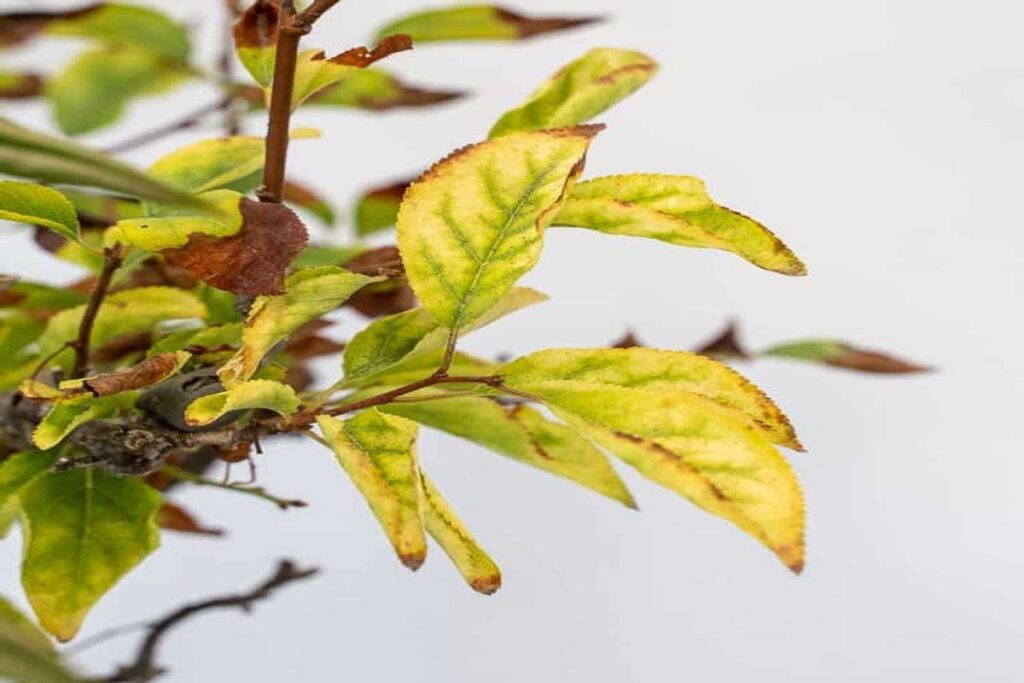
16. Dormancy
Bonsai trees can go into dormancy in the summer, especially when temperatures are extremely high. The main reason is to reduce heat and light absorption as a self-defence mechanism. So, ensure that you provide as much water as needed to prevent dehydration caused by soil saturation or evaporation.
FAQs
How do I take care of a bonsai plant in the summer?
The most crucial aspect is watering. So, provide sufficient water to the soil, pot, and roots without over-misting the leaves. Also, feed it fertilizer more often than usual in summer.
Can I wire my bonsai plant in summer?
It is better to wire a bonsai plant in autumn or winter. During summer, plant shows massive growth, which can swell the branches and cause the wire to bite into them. Also, in summer, you might hurt new buds that appear.
Can I re-pot my bonsai plant in the summer?
The ideal time for repotting is late winter or early spring. However, sometimes you need to do repotting during the summer dormancy for some species. In addition, you need to take extra care not to damage or prune too many of the roots.
Do bonsai plants need direct sunlight?
Bonsai trees need sunlight to make food, so ensure your bonsai receives as much light as possible in the summer. Moreover, provide shade in the afternoon, so the light does not burn the leaves or dry up the soil.
Can I put my bonsai tree outside in the summer?
As a thumb rule, place outdoor bonsai in a bright spot where it can receive lots of light. If summer is especially hot, provide afternoon shade to your bonsai tree.
What temperature is too hot for a bonsai tree?
In most cases, bonsai trees begin to suffer as soon as temperatures reach 90 degrees Fahrenheit, and prolonged high temperatures over 100 degrees can be deadly.
Can I prune the bonsai tree in summer?
You can do Maintenance pruning throughout the growing season, usually from March to September, for outdoor Bonsai.
Conclusion
No doubt the bonsai plant loves heat and sun; summer is a critical period that can kill your precious tree if you do not provide extra care in the summer. You need to take summer care of your bonsai to nourish them daily, keep their leaves healthy, and protect them from the hot sun for the entire season.
I hope these summer bonsai care tips have helped you prepare for summer.
Need more advice? Please don’t hesitate to contact us on Abana Homes for more Bonsai health tips! We will be happy to help you.
Related Articles
- Propagating Chinese Elm Bonsai Cuttings And From Seeds
- Best Chinese Elm Bonsai Soil and Fertilizer.
- Troubleshooting Common Problems With Chinese Elm Bonsai
- Buy Chinese Elm Bonsai: How Not to Get Scammed When Purchasing a Chinese Elm Bonsai Tree!
- Chinese Elm Bonsai Pruning And Styling.
- Creating a Chinese Elm Bonsai Forest- Step-By-Step Guide.

